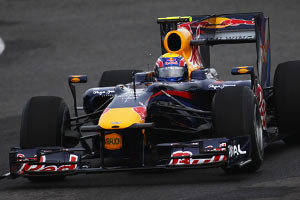autogyro wrote:
Please read the thread. It is a re post. I raced a car with a similar system in 1976, so this is not by any means rocket science.
I've always thought this was an awful lot more complex than bleeding some air in parc ferme and I've long suspected Adrian Newey was itching to get active 'passive' suspension on the car somehow to maintain ride height, but have reserved judgement on what might be going on. However, this looks entirely plausible. Basically, it's just a new damper and can be a part of the suspension system itself as the legal J-damper is (or whatever they call the thing now). People are thinking of ride height adjustment when they should be thinking the other way of keeping the ride height static, or close to static.
However, this system will be insanely complex to get right I would have thought in a Formula 1 car. This isn't a road car. It will have to be tuned in such a way that the ride height varies in concert with the suspension travel, and they'll have to work out the extent to which that happens, they'll have to tune how it works in corners (can it work laterally, and quick enough, to dampen things like roll?), can it work with or replace a J-damper system as a unified system, they'll have to tune it in concert with aerodynamic pressure so it can still vary in corners versus straights, they'll have to tune it to the aerodynamic tendencies of the car, it needs to work under high G....... There's just a few ideas I haven't given much thought to. There's a big minefield of development out there.
I'm suprised no one has thought of this before. Perhaps the fuel weight just hasn't been enough in the past for it to have been worth the effort? If Red Bull have cobbled this together over the winter then I'm impressed and perhaps surprised they've been as reliable as they've been. They will still have a long way to go to perfect this thing as well.




